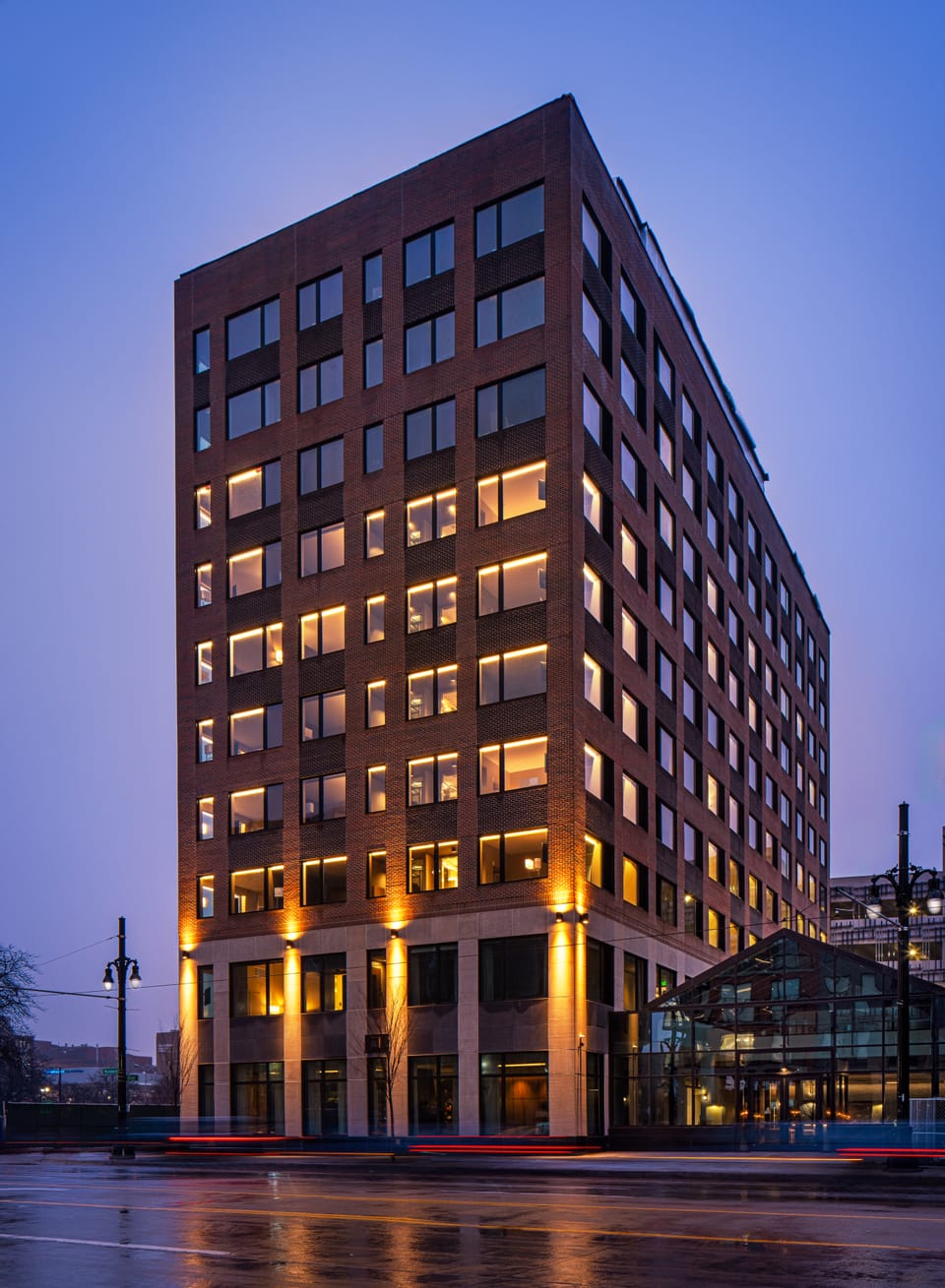Step aside, Renaissance Center. Dan Gilbert wants to take your crown as the tallest building in Detroit.
The plans revealed during a Downtown Development Authority (DDA) meeting this afternoon and posted on a microsite devoted to the project.
The 52 story, 734-foot tall building would be constructed on the old Hudson’s site in downtown Detroit. It would include 250 residential units and 700 parking spaces. There would be 1.2 million square feet in the development, approximately the same as the that of the nearby and historic Penobscot Building. There also would also be a nine story, mixed-use “podium” with arts, culture, commercial, office, and technology space.
The meeting today, along with advanced renderings, was to get the DDA to extend the development agreement timeline for the Hudson’s site because not all of the financing parts required for this project are complete.
This Is Not A Done Deal
There’s a catch for the project to break ground “as planned” on December 1 of this year. A tax financing mechanism that would withhold up to 50 percent of the tax revenue created by the project and give it to the developer to reimburse their costs needs to be approved by the Michigan State Legislature first for Gilbert to break ground.
The proposed Michigan Thrive Initiative would allow a project to keep a portion of the new tax revenue it generates in order to close a gap between what it costs to build the space and what the market rate rents are, with the rest going to the local government and the state. Here’s how the Tax Increment Financing would work.
State sales and income taxes generated from the construction activities on-site; and up to 50 percent of the state income taxes generated from new jobs and residents within the completed development would go to the developer, for a period not to exceed 20 years.
According to the Michigan Economic Growth Coalition, this would put the risk on the developer as no money would be put up front by taxpayers, only recouped on the back end. This plan has not passed the legislature or been signed into law by Governor Rick Snyder as of yet.
Impact Of New Tower
Bedrock estimates the economic impact of the Hudson’s project, according to a study New York based WSP-Parsons Brinkerhoff will be:
- Create more than 5,800 direct and indirect jobs and $1.5 billion in new economic output during the construction of the project
- Generate $230 million in direct annual spending and support 3,000 direct jobs once the project is completed
- Generate $560 million per year in economic output, or nearly $6 billion in total economic output over 10 years
- Have more than 3 million visitors per year.
“For longtime Detroiters, we remember what Hudson’s represented. It wasn’t just a department store – it was the economic engine of Detroit. It drew residents and visitors downtown, where they spent a day shopping at Hudson’s and visiting the retail, restaurants and theaters around it,” said Dan Gilbert, founder and chairman of Rock Ventures and Quicken Loans and founding partner of Bedrock in a statement. “Our goal is to create a development that exceeds the economic and experiential impact even Hudson’s had on the city. We believe this project is so unique that it can help put Detroit back on the national – and even global – map for world-class architecture, talent attraction, technology innovation and job creation.”
Development plans were designed by New York City-based SHoP Architects in partnership with Detroit-based Hamilton Anderson Associates.
If all goes to plan, the new building would open on December 1, 2020.


















